The two parents have their backs to the camera, ten feet away. The father is standing, and the mother crouching, both looking into what looks like a tangled pile of debris, but which (we are told by the photo caption) is a vehicle in Miyagi Prefecture, Japan. The body of their daughter, killed by the tsunami, is trapped inside. I can only imagine the grief on their faces and in their hearts.
This photo stays with me more than another other image coming out of the compounded disasters of the earthquake, tsunami, and meltdown. In fact, I can’t get this whole disaster out of my mind, even as it moves off the front pages of the news. In addition to lingering concerns about radioactive fallout, the disaster provides an instructive lens with which to look at the energy solutions we currently rely on, and where they’re headed.
Renewables barely show up on the charts
Worldwide, 5.8% of energy was produced by nuclear power, according to the most recently available figures (from 2008, published by the International Energy Agency, or IEA, in “Key World Energy Statistics”). The bulk of our energy was produced by oil (33.2%), coal (27.0%), and gas (21.1%). Together, 81.3% of our total energy consumption came from these nonrenewable—that is, non-replaceable—fuel sources. Whether availability of these sources, or at least oil, has peaked, is a matter of some debate that I’ll save for another day. I will note in passing that worldwide oil discoveries peaked in 1964 and have declined sharply since then. We can’t burn it if we haven’t discovered it.
For all the hopeful talk about renewables, they still qualify as “Other” in the IEA pie charts. That’s right: photovoltaic, solar thermal, wind, and geothermal are all lumped together, accounting for 0.7% of global energy supply.
Hydropower, the biggest renewable energy source, stands at 2.2%, but has enormous development costs, environmental impacts, and not a lot of large-scale growth potential. Burning of biomass, biofuels, and similar sources, is also a complicated story. This group comes in at 10.0% of total supply, but not all of that is renewable. IEA says that it doesn’t have a firm grip on how much of that 10% comes from biofuels versus landfill waste (much of which is plastics and other oil-based garbage). Burning of biomass and biofuels is a complex environmental story with many downsides as well as upsides.
We also need to note that from 1973 to 2008, worldwide energy consumption grew at a rate of 2% per year. That means there is a doubling every 35 years. We need solar, wind, geothermal — not to mention oil, gas, coal and nuclear — to all have strong annual growth rates just to meet projected demands. We’ll need even more phenomenal growth in renewables to keep up with demand while also phasing out of carbon.
Peak oil or no, we’re in trouble
Now, back to Japan. Both nationally and internationally, growth in nuclear power generation has been stagnant for decades. Prior to the crisis at Fukushima Daiichi, nuclear was going through a bit of a rebirth despite a strong headwind from people questioning its safety and the feasibility of safe long-term storage or nuclear waste. I think it’s safe to say that that headwind will now be a gale worthy of the peak of Mt. Washington.
Wherever you stand on controversial energy issues of the day, I think you would have to admit we are in a pickle. If you don’t believe in peak oil, do you believe that fossil fuel consumption can increase indefinitely, which is what we currently require of it? Can it do so without causing disastrous global climate change and more mistakes like Deepwater Horizon?
Wherever you stand on nuclear power, do you see us adding hundreds of plants over the next couple of decades to meet worldwide demand?
If you place your hope in renewables, how do you grapple with the low energy “density” of these sources? According to the book Power Hungry by Robert Bryce, photovoltaic installations require eight times as much land as a nuclear plant. Wind power requires 45 times as much land, and corn-based ethanol requires 1,150 times as much land. If we work hard now, we are probably decades away from having enough renewable capacity on a national basis to seriously compete for a big slice of the pie with the kind of steady “baseload” systems fueled now by gas and coal. Hope is not a plan, as they say in the military.

Japan’s energy is part of our economy
It may be tempting to think about energy in the abstract — simply something we use to do the things we really want to do, like getting to work, getting to school, staying warm, making things, growing things, powering life-support systems, and downloading movies.
Japan provides a picture of what it’s like to suddenly run short of power in a modern society with all its conveniences. There, we see rolling blackouts, empty shelves, halted trains with commuters unable to get to work, and evacuees sleeping on floors in community centers to stay warm.
Japan’s energy picture is part of our economic picture, too. It took just days for GM to shut down a Louisiana pickup truck plant due to lack of parts from Japan. Consumers looking for new iPads have found supplies limited. Farmers looking to sell beef in Japan have found that containers can’t be unloaded because refrigeration isn’t guaranteed in warehouses and stores. Without energy, Japan’s economy is at a standstill, and ours will be affected, perhaps deeply if you look at how we finance our debt.
“Unlimited growth” does not amount to planning
Few people anticipated a 9.0-magnitute earthquake on this fault line, or a tsunami of this magnitude. The family in Miyagi probably never foresaw what was coming. On the other hand, we can see from easily available information that major imbalances in our economic and energy futures that could be very disruptive to many lives. I hope that all of us will be in a position to face these issues squarely and resourcefully.
Looking back 200 years, our recipe for economic growth has been to expand the availability of cheap energy supplies. How we stay powered up over the next 10, 20, 30, and 100 years is going to be a compelling story that I will be paying close attention to and covering in this column. I plan to address important big-picture issues, key design breakthroughs, tools for professionals, and hands-on solutions for business owners and homeowners.
If you have feedback on the column, or questions or comments about energy solutions in your life, please leave your comments below or contact me here. I will answer your questions in future columns. Please send your good wishes to my colleague Alex Wilson, who is generously lending me this space while he is on sabbatical. You can follow his upcoming bike trip at www.ATWilson.com.
Tristan Roberts is Editorial Director at BuildingGreen, Inc., in Brattleboro, Vermont.
Photo credit: Kyodo News
Weekly Newsletter
Get building science and energy efficiency advice, plus special offers, in your inbox.

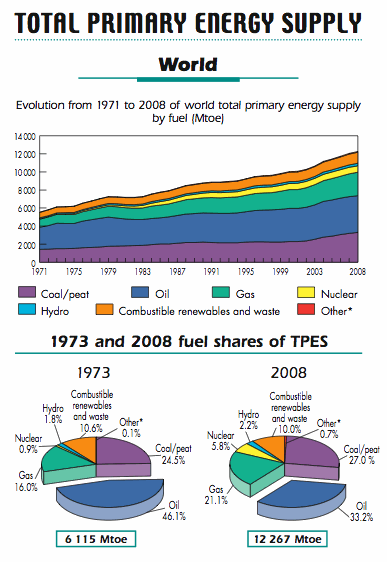




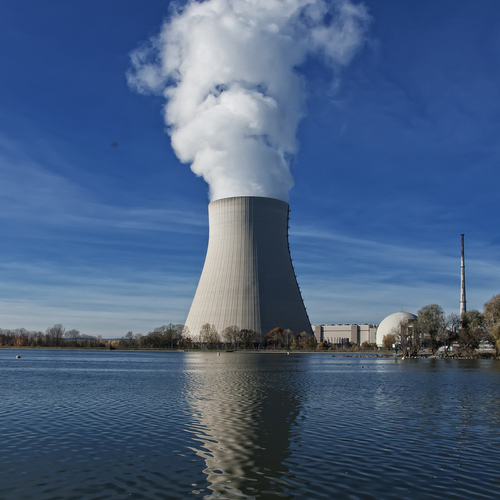
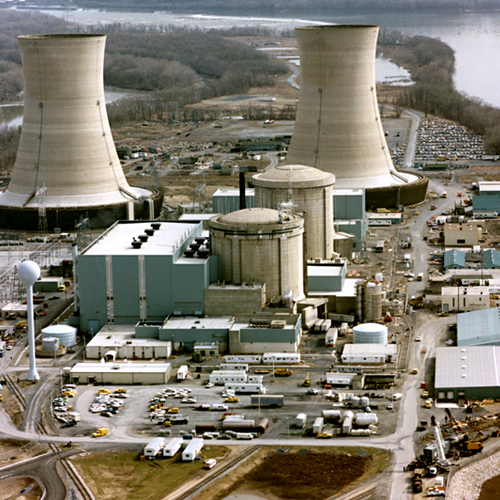
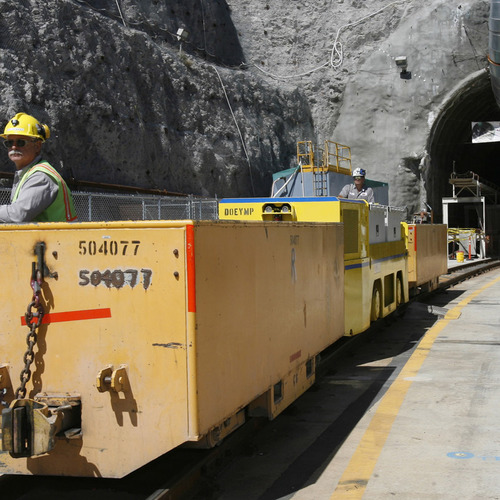
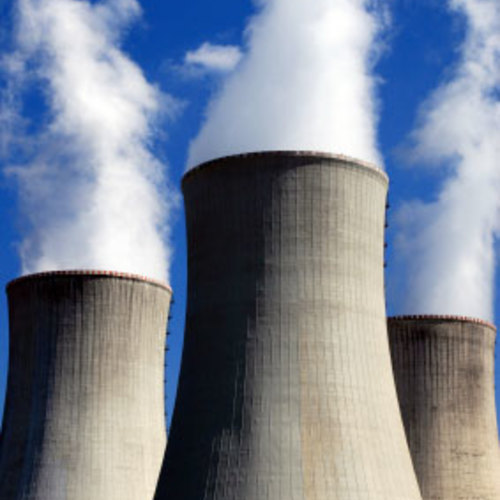






12 Comments
Robert Bryce is an attorney
Robert Bryce is an attorney who installed some PV on his roof and who now authors energy books. His work is useful as a foil, not as an authoritative reference. The land area figures he cites for solar and wind are misleading, bordering on the ridiculous.
Regarding energy consumption in general, it is important to differentiate between the developed and the developing world when analyzing energy usage. US primary energy consumption for instance is hovering at 1998-99 levels, and US energy intensity has been falling sharply, continuously, for decades. Green building has been having a impact!
http://www.eia.gov/emeu/mer/pdf/pages/sec1_2.pdf
http://www.eia.doe.gov/cfapps/country/country_energy_data.cfm?fips=US#
Thorium nuclear power fuel cycle
This country, and by extension the modern world, has been following the lead of Admiral Hyman Rickover, who in 1955 oversaw the launch of the USS Nautilus using solid uranium oxide enriched with U-235. Lots of reasons for doing it in 1955 - it was quick to implement, and hey, you got weapons-grade plutonium as a by-product. This submarine ordnance technology is what Westinghouse used to build the first commercial reactor in 1957 and we've been stuck with the same technology and the growing consequences of this fuel since then. There ARE nuclear alternatives-thorium is the most promising- but NONE of them are waste free. There are, however, a hell of a lot less risky, and the waste stays hot for hundreds, not hundreds of thousands, of years. If it weren't viable, India wouldn't be investing billions in research to build liquid thorium flouride reactors. Just sayin'. http://www.americanscientist.org/issues/feature/2010/4/liquid-fluoride-thorium-reactors
Welcome Triston, good blog.
Welcome Triston, good blog.
With the disaster in Japan we
With the disaster in Japan we are once again reminded of the danger of nuclear power. Society tends to forget about the past until we are reminded through an ongoing catastrophe. It is appalling that we are still mired in a dirty energy policy in 2011. Especially since the technology in clean renewable sources of energy has advanced measurably since the 70's and 80's. The major impediments to a clean energy future are very clear. Corporately controlled government, major pressure from wealthy fossil fuel lobbies, and a group of elected officials that stroke Big Oil, Coal and Gas like a six week old puppy are just a few. Following the big three is a population that in the majority is uneducated or just plain disinterested in the cause. Green Building and Building science are slowly educating and changing the minds of many, but as your article has stated it is not at all enough to impact major changes. Until we eradicate the impediments we will be forced to advance at a snails pace. If the general public can not understand that our climate is changing rapidly and that it is directly related to human influence, we are beating the proverbial "dead horse". I believe that we as a collective global community can correct the problems and change our energy future to Clean Renewable Energy. Great article and extremely relevant.
What about the debt to our children?
The question of disposal of spent fuels is still not discussed often. The primary conservative priority these days is to reduce the debt we leave to future generations. Certainly they will be out front on this issue: the cost of safeguarding and monitoring nuclear waste for possibly more than 100,000 years.
Also, I have never seen the cost of decommissioning a nuclear plant included in the public estimates to build it and the cost to produce energy.
Of course not
The future costs and externalities are never discussed enough. We would never do most of the things we're doing now if they were.
Need to look at consumption as well
As all of our attempts to control energy use in our buildings has made huge gains on that front, the fact of the matter is that the U.S. is a society based on consumption. As this recent analysis would point out, http://www.grist.org/list/2011-03-29-how-americans-defeated-efficiency-with-consumerism our energy use is increasing being defined by those items generally thought of as luxury goods versus necessities. That's not to say, of course, that increasingly stringent energy code requirements for buildings does not matter, but just as Mr. Holladay has routinely pointed out, we need to look at those aspects outside just a building's construction for ways to cut energy use.
Thorium nuclear power
I begrudgingly see the need for thorium nuclear power. The technology is much safer than uranium nuclear power. Thorium is way more plentiful as well. To get the above mentioned article in pdf format written by American Scientist, Liquid Fluoride Thorium Reactors, but without being a subscriber to their magazine, go to:
http://energyfromthorium.com/2010/07/01/welcome-american-scientist-readers/
and then click on the link titled: Liquid Fluoride Thorium Reactors.
My belief is that we as a world-wide society can if we so choose build a solar based sustainable energy system instead of taking the nuclear path. Mostly this would be done by building concentrating solar-thermal power plants (CSP) in the vast deserts of planet Earth. If any interest, check out the pdf file at:
http://www.desertec.org/fileadmin/downloads/desertec-foundation_redpaper_3rd-edition_english.pdf
An added benefit to this technology is that it would solve the need for clean potable water for many of the drier areas of the planet.
It is unfortunate that the people who seem to get their way in our hyper-capitalized system are those who don't care about future sustainability, but only current profit for themselves and their families. As Tristan mentions in his blog, renewables hardly show up on the chart. So, the dirty energy folks get their way, continuing the dirty energy path for our world, keeping energy production centralized, and in their control.
A sustainable solar based energy system is my preference, but I don't see it coming soon enough to help minimize the coming global catastrophe from climate change, therefore my support of thorium power.
comments so far
Thanks all for the excellent comments and discussions on the post.
With thorium, can anyone sum up the technical difficulties behind using these reactors? (Commonly called MSR, or molten salt reactor types, I believe.)
Mark, I appreciate the perspective on Bryce and the other links.
Plans for renewable energy
Several studies have been done proposing a mix of alternative energy sources to replace energy rich fossil fuels whose emissions are the primary ingredient in climate change. Here's a link to one -- http://www.stanford.edu/group/efmh/jacobson/Articles/I/JDEnPolicyPt1.pdf. Others appear in Issues of Scientific American in 2008 and 2004. Clearly it will take a monumental effort to replace gas, oil, and coal with renewable energy. If we choose to be truly responsible to our children and their children and the billions of people at risk from rising sea levels and severe weather events, we can make the switch. Sadly, I suspect that we'll make the other choice and roll the dice with the environment. Whatever happens, I want to do all I can to build a more sustainable society.
energy future?
It should be obvious to everyone by now that the Holy Grail of free energy has always been a tortured version of the quest for perpetual motion.It should also be very clear that no matter what energy source you prefer,the future cost will be too high ,period. Finally, if we want to go forward with at least one foot in reality we must acknowledge that what we are looking at is a future of cascading entropy in which the systems we have put in place ,designed with cheap energy as an unquestioned assumption, will crash.We simply do not have the energy left to invest in the massive overhaul that is necessary to remake our world in a new form .
They say that young military generals always talk strategy,but older ones always talk logistics.That is where battles are won and lost.Gentleman, this one is lost.
Now of course we feel driven to do SOMETHING-- ANYTHING because we feel responsible to each other to try. That is admirable and it will keep debates like this one going for a long time. But sooner or later we will be facing one version or another of a tsunami,and then we will be in a better position to recognize what is possible.
critical thinking
I'm a bit late to this post, but I think it, and several of the comments, hit the nail on the head. As a long-time reader of the blogs on this site, I look forward to more of Tristan's insights. Thank you Thomas and Chris for the reminder about thorium--the road not taken. As a geologist/geophysicist (I take a REALLY long view of things), the pressurized light-water reactors we now use couldn't be a better choice--if the goals are to maximize the risk of proliferation and more Fukishimas, and deal with unforeseeable issues concerning the geological sequestration of high-level waste for longer than civilization has existed (it is useful to remember that Nevada was a rainy, humid climate and the basins around Yucca Mountain were pluvial lakes 20,000 years ago during the last glacial stage). The physics of a LFTR minimize or eliminate these issues.
And thanks Brian for reminding readers that the 2nd law of thermodynamics will not go away just because politicians and well-meaning (but physics-challenged) environmentalists demand renewable portfiolio standards and want to humiliate our last remaining open spaces with millions of intermittent wind turbines purveyed by Wall St investment banks and Enron retreads--the perfect example of taking what we, in the day, called "appropriate technology" (a home based renewable energy device connected to a battery) and turning it into a cash cow with very questionable thermodynamic benefits. The problematic choices we face stem from our energy policies being made primarily by lobbyists and wishful thinkers (of all ideologies), not critical thinking, which is why I like GBA so much: practical, science based, and rich in data and empirical observation that we are currently applying to the deep energy retrofit of our 1889 farmhouse. Our energy future, as Tristan reminds us, is going to be very interesting, and whether we succeed (or not) will have much to do with whether our science-challenged populace wakes up and starts thinking critically.
Log in or create an account to post a comment.
Sign up Log in